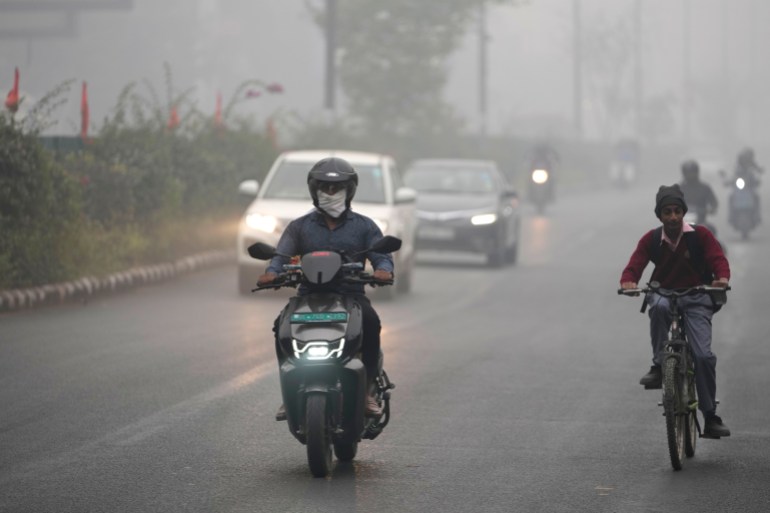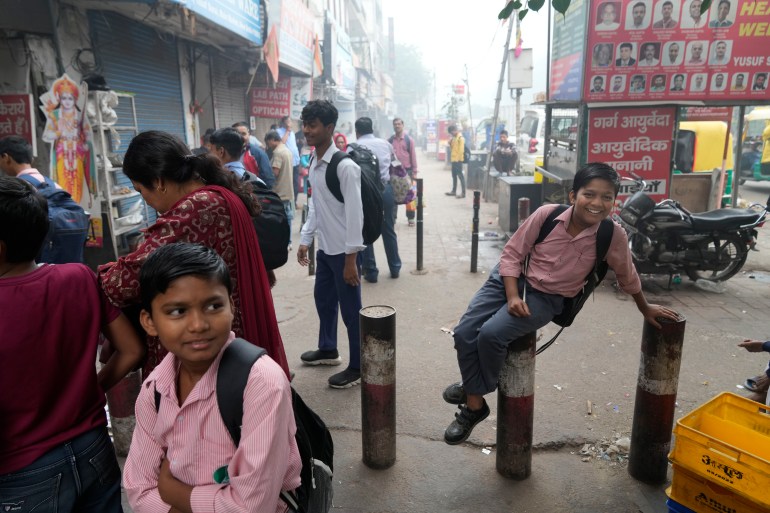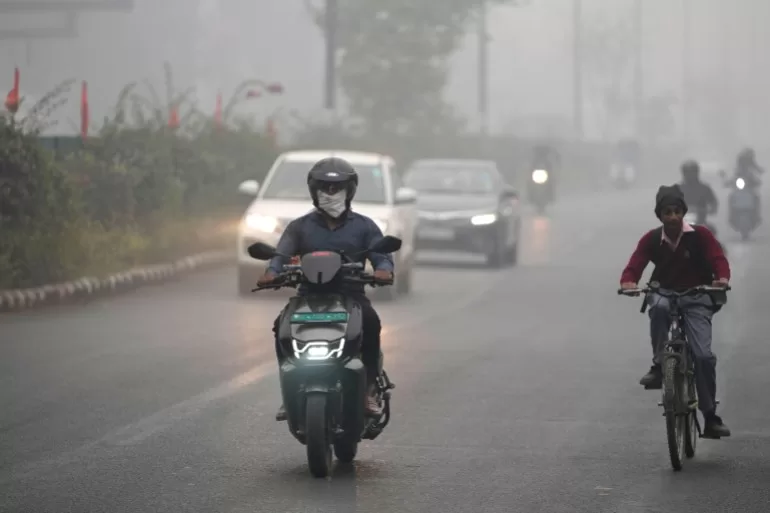Schools go online until further notice because of worsening toxic smog, the latest bid to ease the Indian capital’s health crisis.
Authorities in India’s capital have shut schools, halted construction and banned non-essential trucks from entering the city after air pollution shot up to its worst level this season.
A thick blanket of toxic smog engulfed most parts of northern India on Monday after dense fog overnight, with the “hazardous” air quality in some areas of the National Capital Territory (NCT) of Delhi hitting a new high of 1,081, according to Swiss group IQAir’s live rankings.
India’s pollution control authority said the national capital territory’s 24-hour air quality index (AQI) reading was 484, classified as “severe plus”, the highest this year.
Experts say the scores vary because of a difference in the scale countries adopt to convert pollutant concentrations into AQI, and so the same quantity of a specific pollutant may be translated as different AQI scores in different countries.

Meanwhile, the concentration of PM2.5 – particulate matter measuring 2.5 microns or less in diameter that can be carried into the lungs, causing deadly diseases and cardiac issues – was 39 times the World Health Organization’s recommended levels.
The smog, a toxic blend of smoke and fog, happens each year in winter as cold air traps dust, emissions, and smoke from illegal farm fires in some surrounding states.
Authorities directed all schools in Delhi to move classes online and tightened restrictions on construction activities and vehicle movements, citing efforts to “prevent further deterioration” of the air quality. Authorities hope, by keeping children at home, traffic will be significantly reduced.
“Physical classes shall be discontinued for all students, apart from Class 10 and 12,” Chief Minister Atishi, who uses only one name, said in a statement late on Sunday. Similar restrictions were adopted last week too.
Many in the city cannot afford air filters, nor do they have homes they can effectively seal from the misery of foul-smelling air blamed for thousands of premature deaths every year. Delhi and the surrounding metropolitan area, home to more than 30 million people, consistently top world rankings for air pollution in winter.
“My eyes have been burning for the last few days”, said rickshaw puller Subodh Kumar, 30. “Pollution or no pollution, I have to be on the road, where else will I go?” he said, pausing from eating breakfast at a roadside stall.
“We don’t have an option to stay indoors… our livelihood, food, and life – everything is in the open.”
Farm fires – where stubble left after harvesting rice is burned to clear fields – have contributed as much as 40 percent of the pollution in Delhi, SAFAR, a weather forecasting agency under the Ministry of Earth Sciences, has said. Satellites detected 1,334 such events in six Indian states on Sunday, the most in the last four days, according to India’s Consortium for Research on Agroecosystem Monitoring and Modeling from Space (CREAMS).

Despite the polluted air, many residents continued their daily routines. Many structures were barely visible, including New Delhi’s iconic India Gate as visibility dropped to 100 metres (109 yards. Authorities said flights and trains continued to operate with some delays.
India’s weather department has also forecast “dense to very dense fog” for the northern states of Uttar Pradesh, Haryana and Rajasthan for Monday.
Cooler temperatures and slow-moving winds worsen the situation by trapping deadly pollutants each winter, stretching from mid-October until at least January.
India’s Supreme Court last month ruled that clean air was a fundamental human right, ordering the central government and state-level authorities to take action.
